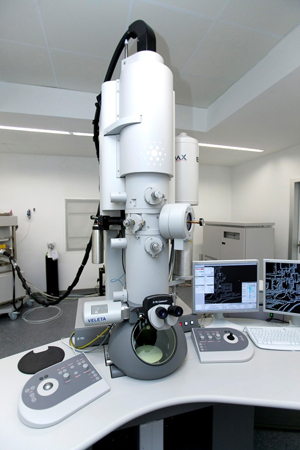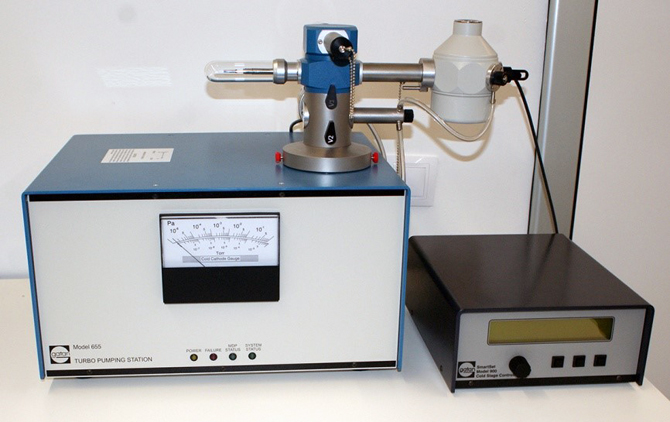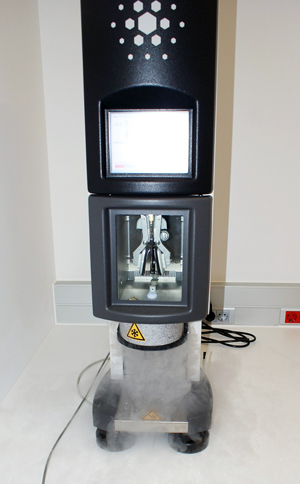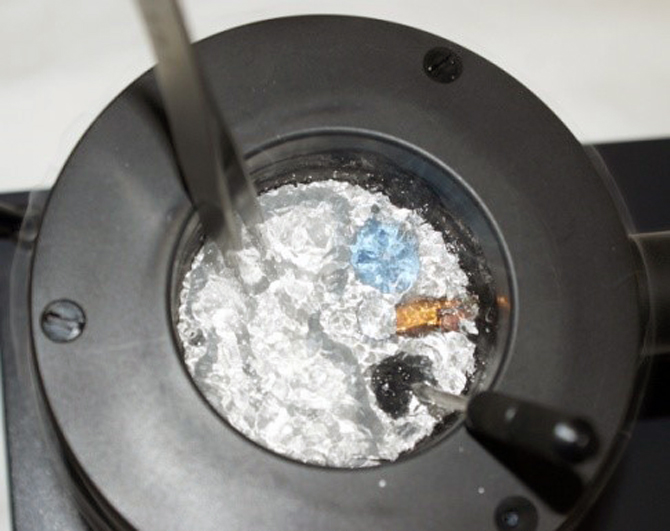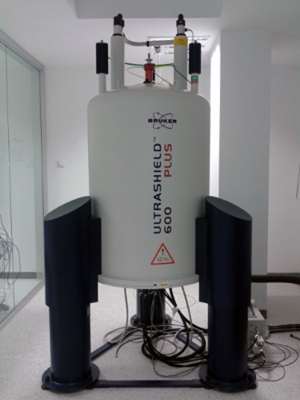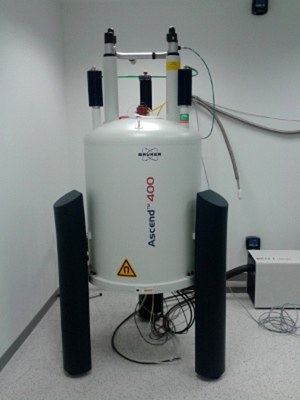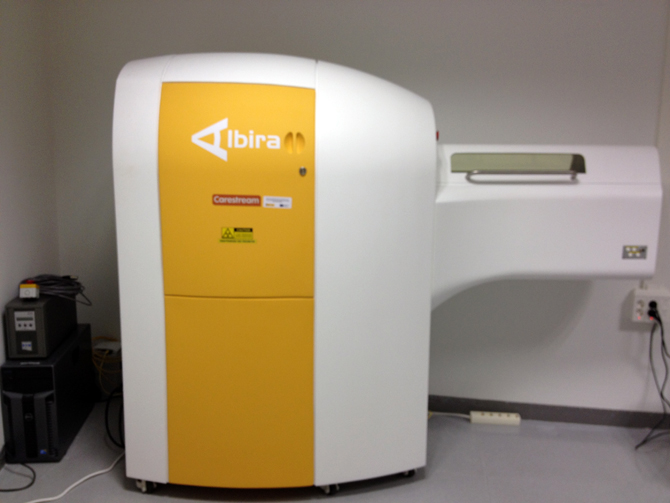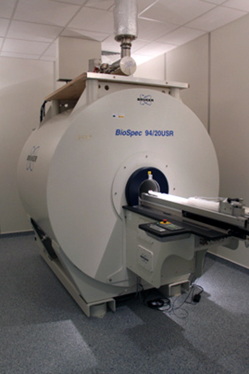U28-E08. FEI Quanta 250 FEG Scanning Electron Microscope + ESEM Mode
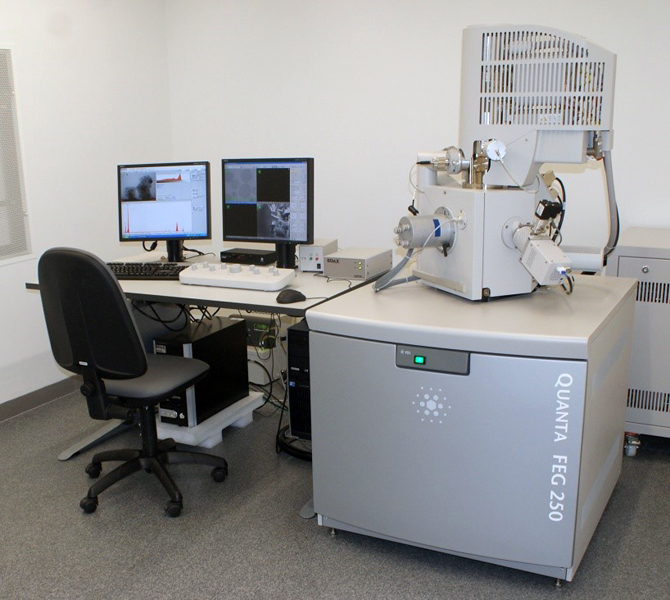
Specifications:
Everhart-Thornley detector of secondary electrons for high vacuum applications providing topographical information
High contrast backscattered electron detector optimized to work with low volt-ages: vCD detector. Suitable for high-vacuum and low vacuum modes, provides topographical and compositional contrast
Scanning-transmission electron microscopy detector (STEM) for high vacuum applications. Allows to introduce 8 grids in one vacuum cycle and to perform bright field and dark field analysis
Large field detector (LFD) for low vacuum and ESEM applications. Allows working in SE and BSE modes and facilitates the observation of large fields of view
Gaseous secondary electrons detector (GSED) for environmental-SEM (ESEM) applications
Gaseous analytical detector (GAD) for ESEM applications
Wet scanning-transmission electron microscopy detector (Wet-STEM) for
ESEM applications







